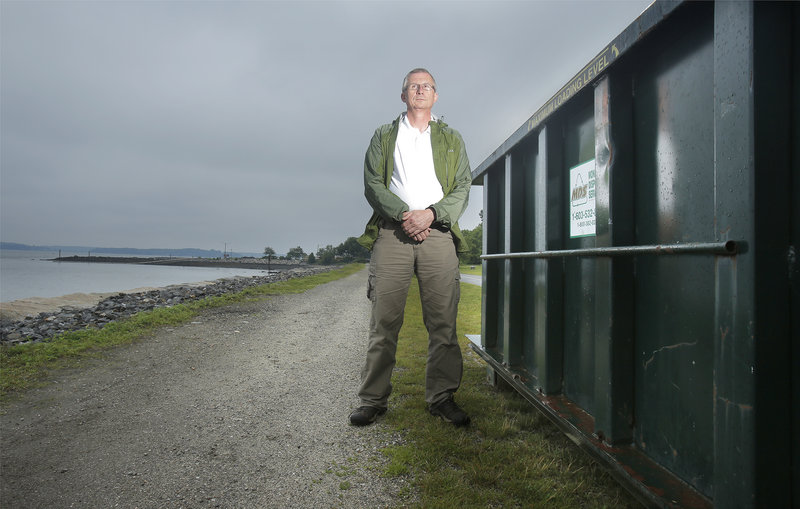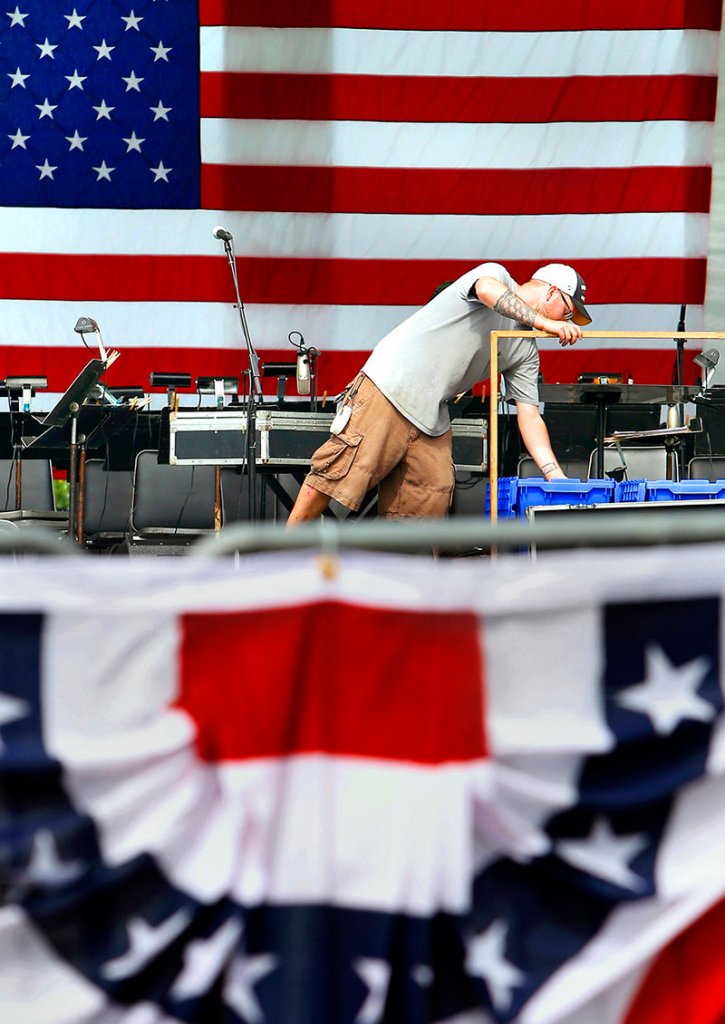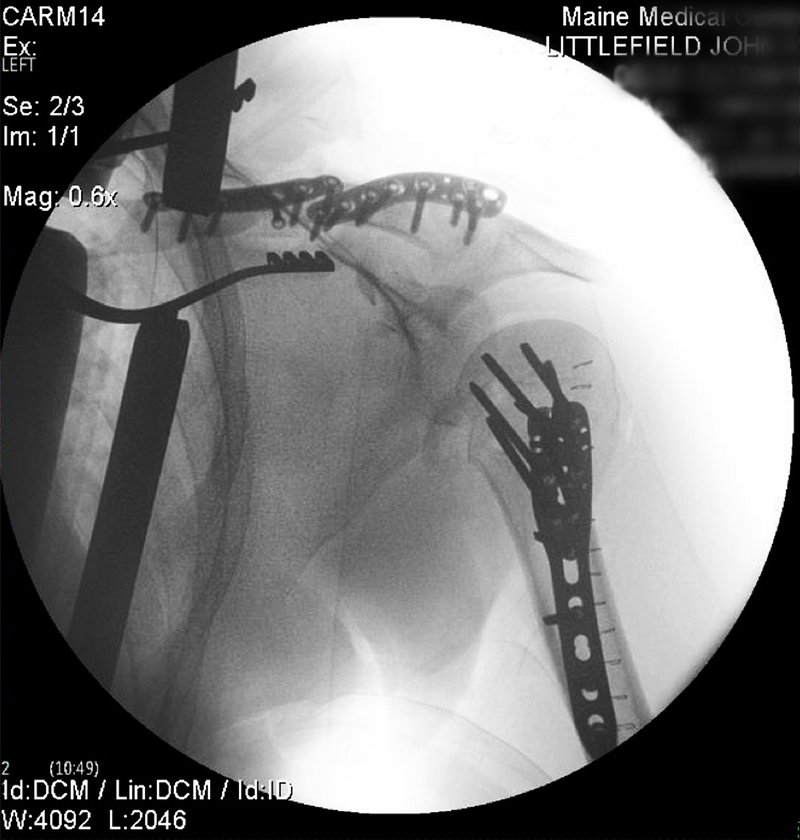PORTLAND – John Littlefield suddenly found himself on his back on a barge anchored off the Eastern Promenade last July 5 as fireworks rocketed from the racks nearby.
His shoulder hurt. He could barely catch his breath. But over the thunder of the grand finale of Portland’s 2012 “Stars and Stripes Spectacular,” the professional pryotechnician heard his co-workers calling for someone to help him.
Soon after, in the emergency room of Maine Medical Center, he caught a TV news report about a pyrotechnician who had suffered “minor injuries” during the city’s fireworks display.
“I have not seen a doctor yet, but the local TV station knows my medical condition,” Littlefield said. “Amazing!”
Those injuries turned out to be a broken humerus, clavicle and scapula, broken neck vertebrae and ribs, and a collapsed lung. Littlefield would undergo two surgeries, involving stainless steel plates and screws, and spend 10 days in the hospital. The last of the metal pieces was removed two months ago.
As Portland prepares for Thursday’s “Stars and Stripes Spectacular,” Littlefield’s story highlights the dangers of fireworks – even in the hands of professionals.
Portland has had four commercial fireworks incidents in the past 15 years, two in the past three years during July 4th displays by the company that’s putting on this year’s show.
Littlefield, who was injured when a mortar exploded just above the barge, was reluctant to share his story until recently.
He said he still has nerve damage in his left shoulder, causing partial paralysis that makes day-to-day tasks difficult. He can still do his desk job as an electrical engineer at Fairchild Semiconductor, but has had to give up basketball, swimming and kayaking.
And he will no longer work on commercial fireworks displays.
“Still, I am lucky,” said Littlefield, 57, of Dayton. “A difference of 10 inches of (the) impact location, and I would have been hit square in the face, which undoubtedly would have been fatal.”
The Occupational Safety and Health Administration did not investigate the incident because it wasn’t fatal and fewer than three people had to be hospitalized, said William Coffin, OSHA’s area director in Maine.
The American Pyrotechnics Association, the nation’s oldest fireworks trade organization, tracks only consumer fireworks accidents because those involving professional pyrotechnicians are rare, said Julie Heckman, the association’s executive director.
Last year, 8,658 injuries from consumer fireworks were reported, according to the American Pyrotechnics Association.
Maine hospitals reported 19 injuries related to consumer fireworks in 2012 — when consumer fireworks became legal in the state, said Richard Taylor, senior research and planning analyst for the state Fire Marshal’s Office.
Professionals typically get hurt when fireworks are hand-fired, Heckman said, but most large shows are fired electronically so they’re safer.
“The operator is nowhere near the rack or the material,” she said. “In the event there is a shell that malfunctions in a tube, the operator won’t be harmed.”
That wasn’t the case in Portland last year.
While the show by Atlas PyroVision Productions of Jaffrey, N.H., was electronically fired, the crew and the fireworks were aboard a 110-foot-by-30-foot barge anchored off the Eastern Promenade.
The crew had a plywood shelter for protection, but had to venture out to extinguish a small fire that started when a mortar exploded on the barge, Littlefield said, and to uncover the racks full of fireworks for the grand finale.
“The thump of the lift charge is felt in your bones when you are this close to the mortars,” Littlefield said. “Those of us who put on the show are just a few feet away with only a hard hat, (a life jacket) and goggles for protection.”
Last year was the first time Portland’s fireworks were shot from a barge — to free up more seating on the Eastern Promenade, said city spokeswoman Nicole Clegg.
This year, Atlas PyroVision, which has produced the city’s fireworks show for years, will go back to firing from a staging area on the prom. The reason isn’t Littlefield’s injuries, Clegg said, but because the show shot from the barge wasn’t as good and presented more challenges.
“Based on the currents, (the barge) had to be placed in a very specific area,” Clegg said. “And that actually didn’t provide for the best viewing experience for the people closest to the shoreline.”
Another logistical challenge was a severe thunderstorm that prompted the city to postpone the fireworks from July 4 to July 5.
Littlefield recalled the crew battening down the hatches as the storm approached and its effort to keep the plywood shelter from flying away.
The wind was so strong, he said, that the barge was dragging its anchor. As lightning flashed overhead, the crew could only pray that a bolt wouldn’t ignite the barge.
Moisture can cause mortars to misfire, and Littlefield said the crew noticed more misfires than usual on July 5 — at least a half dozen, compared with the one or two in a typical show.
One shell exploded in the water next to the barge, and another exploded on the barge, causing a small fire that was quickly extinguished by the crew, he said.
Stephen Pelkey, chief executive officer of Atlas PyroVision Productions, said in an email that Littlefield’s injuries were likely caused by a piece of cardboard shrapnel from a mortar that detonated just above the barge.
“The cause of the low breaking shell was determined to be insufficient lift charge as a result of water damage from the significant rainfall the previous day,” said Pelkey.
Under Maine’s workers compensation law, Atlas had to pay for Littlefield’s medical bills and lost wages.
Littlefield would not provide an estimate of his medical bills, but he now gets a weekly check for $6.01 for his lost wages.
There is no recourse for pain and suffering, under Maine’s law, for employees who get hurt on the job, said Paul Sighinolfi, executive director of the Maine Worker’s Compensation Board.
Sighinolfi said Maine’s law — like those in other states — was drafted that way so employees don’t have to prove negligence by employers.
Pelkey said the company added safety measures after Littlefield’s injury.
Crews must fully re-inspect all mortar tubes after heavy rain and remove damaged shells, he said. And only three workers will be allowed for barge-fired shows, and all must remain behind the plywood shelter.
“We are very pleased with our record of incidents regarding the professional display of fireworks,” Pelkey said.
Portland officials believe that the 50,000 spectators who are expected to attend this year’s 25-minute show — featuring more than 3,000 shells — will have nothing to worry about.
“We are confident that Atlas will put on a safe show,” said Anita LaChance, the city’s director of recreation and facilities management. “Fireworks are inherently dangerous, but Atlas is an experienced company, firing approximately 700 shows annually.”
Littlefield said a part of him wishes he were out there getting ready for this year’s show.
“I just had a blast with those guys,” he said, “and they’re getting ready to do this again.”
Randy Billings can be contacted at 791-6346 or at:
rbillings@pressherald.com
Twitter: @randybillings
Send questions/comments to the editors.





